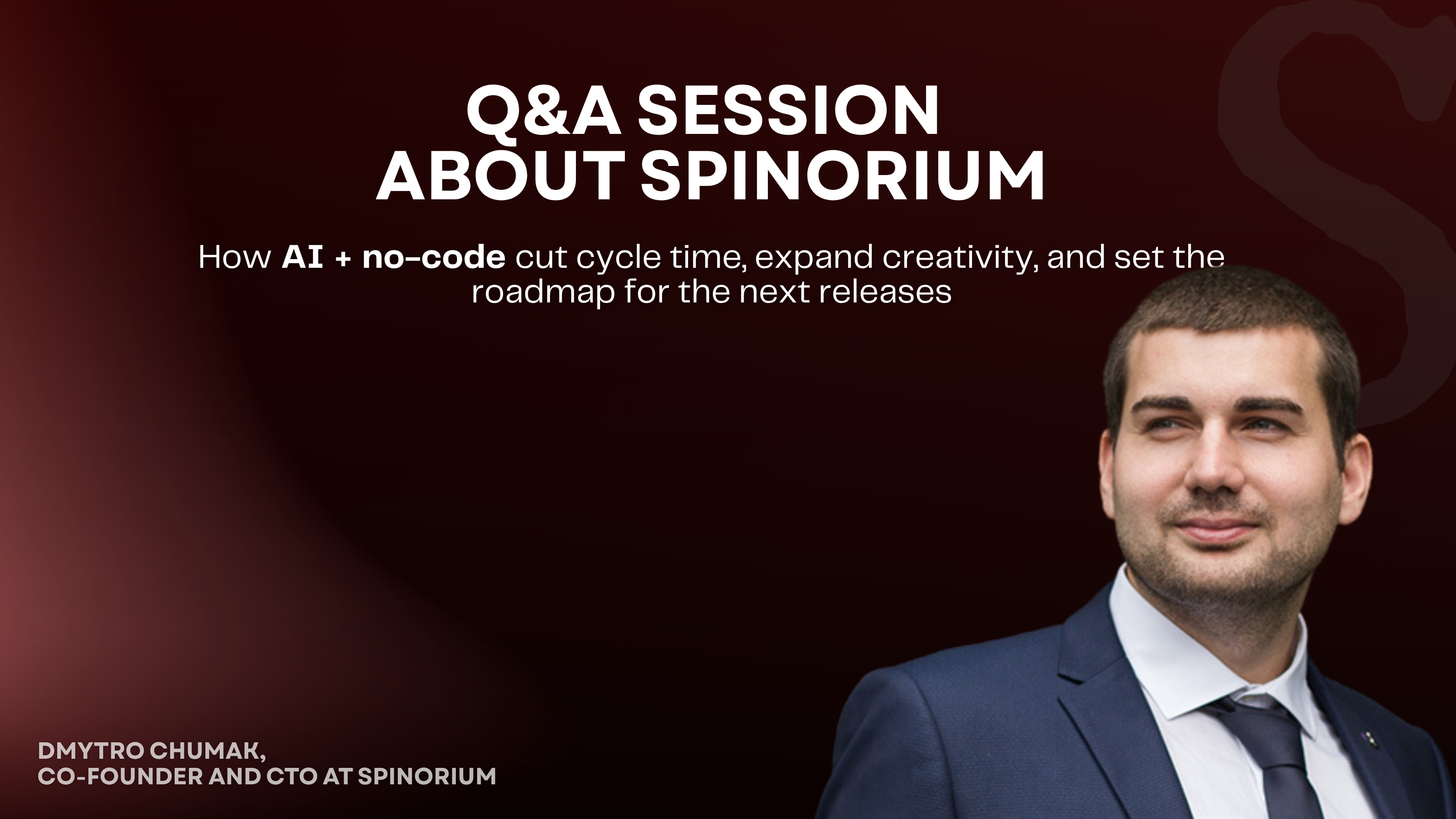Now Reading: How Spinorium Is Redefining Slot Development Through AI and No-Code Innovation
-
01
How Spinorium Is Redefining Slot Development Through AI and No-Code Innovation

How Spinorium Is Redefining Slot Development Through AI and No-Code Innovation
Spinorium CTO Dmytro Chumak shares insights on the company’s AI-powered no-code framework, explaining how it tackles iGaming’s biggest technical challenges and speeds up game development.
1. What technical pain points have been the most challenging for iGaming providers in your experience as CTO? What inspired you to create an AI-powered no-code framework?
Over five years in iGaming, I’ve repeatedly seen the same pain points:
1. Low component reusability – every new game feels like reinventing the wheel, copy-pasting the same components and tweaking them at the game level.
2. Long iteration cycles – engineering time gets burned on boilerplate (asset packing, feature wiring, localization).
3. Released-game support – keeping up with fast-changing jurisdictional requirements and new casino integrations always turns into a headache.
This is exactly what inspired us to create a technology that helps providers eliminate technical pain, shorten development cycles, and focus on creativity.
2. Which technologies does Spinorium support?
Spinorium supports all industry-standard technologies for HTML5 slot development. In particular, we support Spine (skeletal animation), frame-by-frame animations (spritesheets), embedded video, and particles (pixi-particles plus additional behavior presets and an in-editor controller). We also include a trail-effects system, commonly used for collect effects and animated win lines. We’re also actively onboarding new providers and invite teams to test-drive Spinorium – get sandbox access to the editor and modules, build a playable prototype, and evaluate how it fits your pipeline.
3. Does using an editor make games look the same? How does Spinorium ensure uniqueness and variety in gameplay and art?
Absolutely not. As CTO, I can say the builder is a composition engine, not a template factory. Spinorium uses a modular component system where layout, mechanics, audio, and UI are independent layers. You can reuse “bricks” from prior games, but every brick is skinnable, overridable, and extensible.
In practice this means:
- Art freedom: custom themes, fonts, shader-like filters, Spine or frame-by-frame animation, particles/trails – each with per-scene overrides.
- Gameplay variety: configurable reels, paytables, features (respins, collectors, multipliers, progressives), states, and timing – assembled like LEGO, but not constrained to a single pattern.
- Extensibility: missing a “brick”? we add it once and it becomes instantly available in the editor for all projects.
So games don’t converge – they diverge. The same toolkit can produce a classic fruity or an epic sci-fi progressive; uniqueness is driven by your creative direction, while the builder removes the technical friction that used to make every experiment expensive.
4. How do visuals and animation work – does it place any limits on artistic freedom?
Quite the opposite – AAA visuals on even low-end devices, and we keep pushing it.
We minimize texture sizes for static art and animations, group assets smartly, same for audio.
Result: highly immersive games under 20 MB. More to come.
5. What is your favorite Spinorium feature for assembling slot games, and why does it remove key technical bottlenecks?
My favorite feature is the Timeline system. It models slot gameplay as a sequence of declarative actions, so complex flows become easy to assemble without code. This removes bottlenecks by cutting boilerplate, reducing handoffs, and making AI-driven logic plug-and-play.
6. What are the key items on the 2026 roadmap, and how will they further reduce time-to-market?
Our 2026 roadmap centers on two levers to cut time-to-market: a full AI-assisted slot generator that turns a theme-and-features prompt into a playable, test-ready build in minutes, and a unified regression test framework that automates daily dev/QA and drastically reduces post-release maintenance for live games.
Read Also: Sustainable gaming: how to design games that promote healthy playing habits












